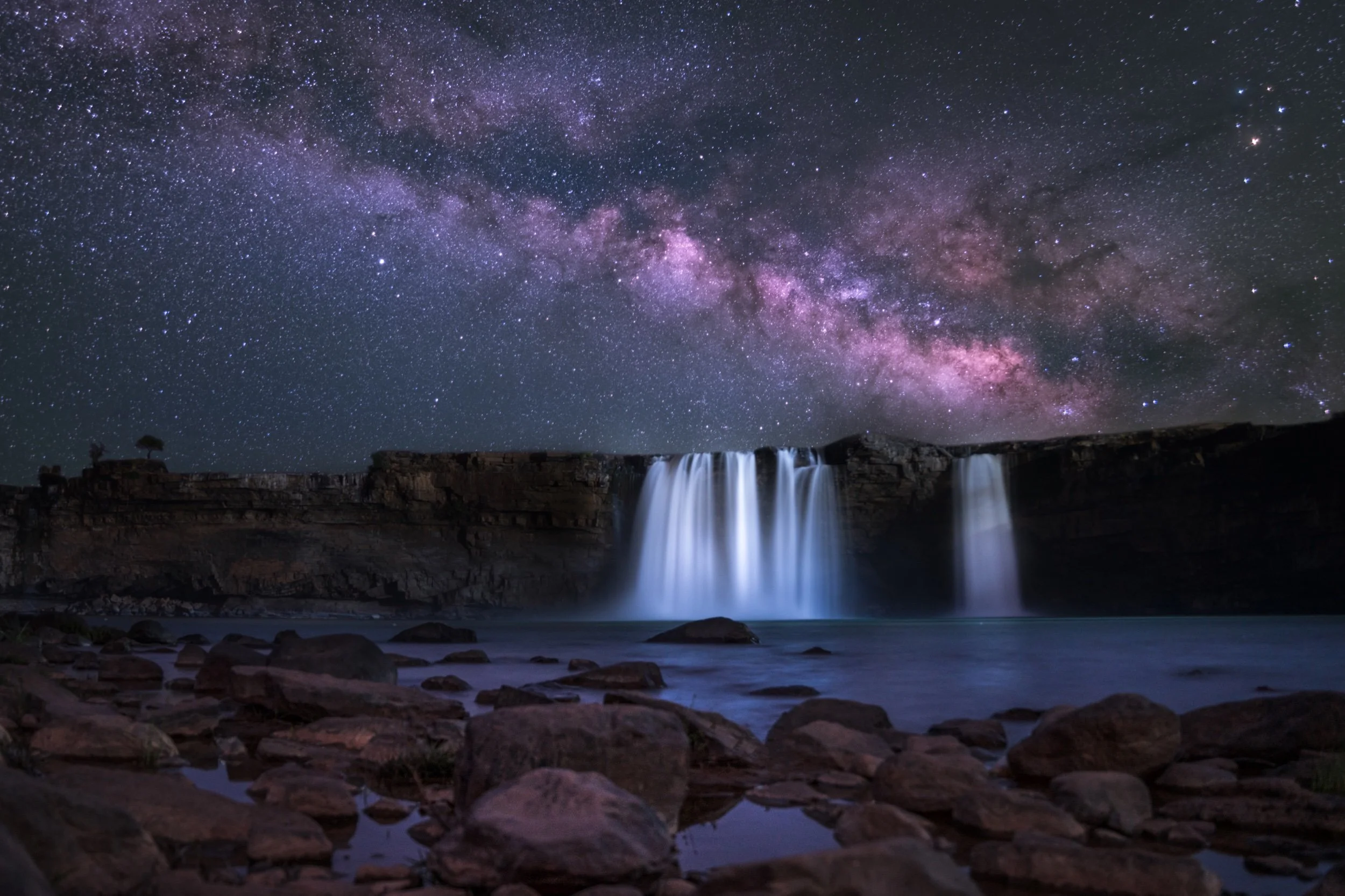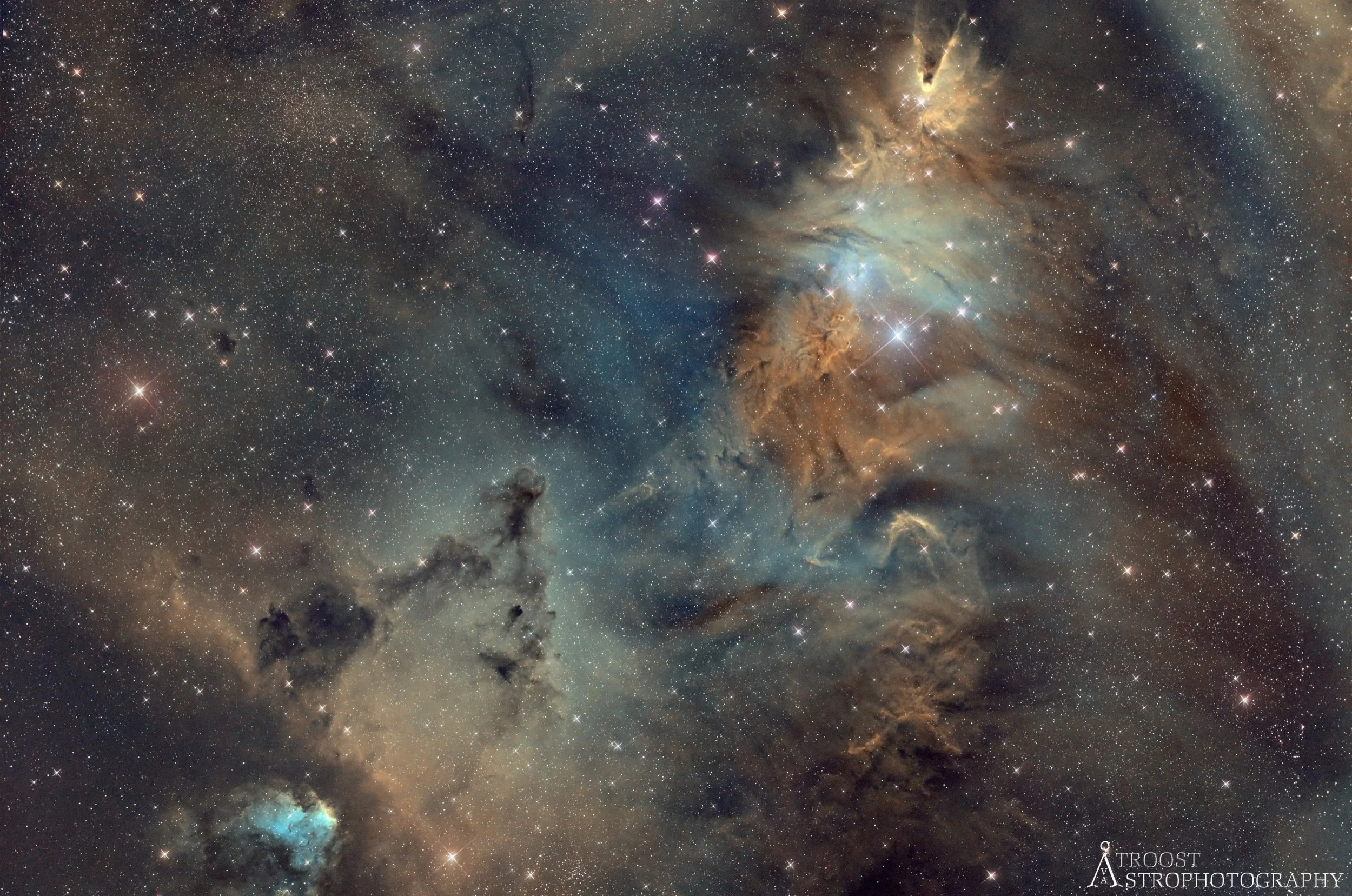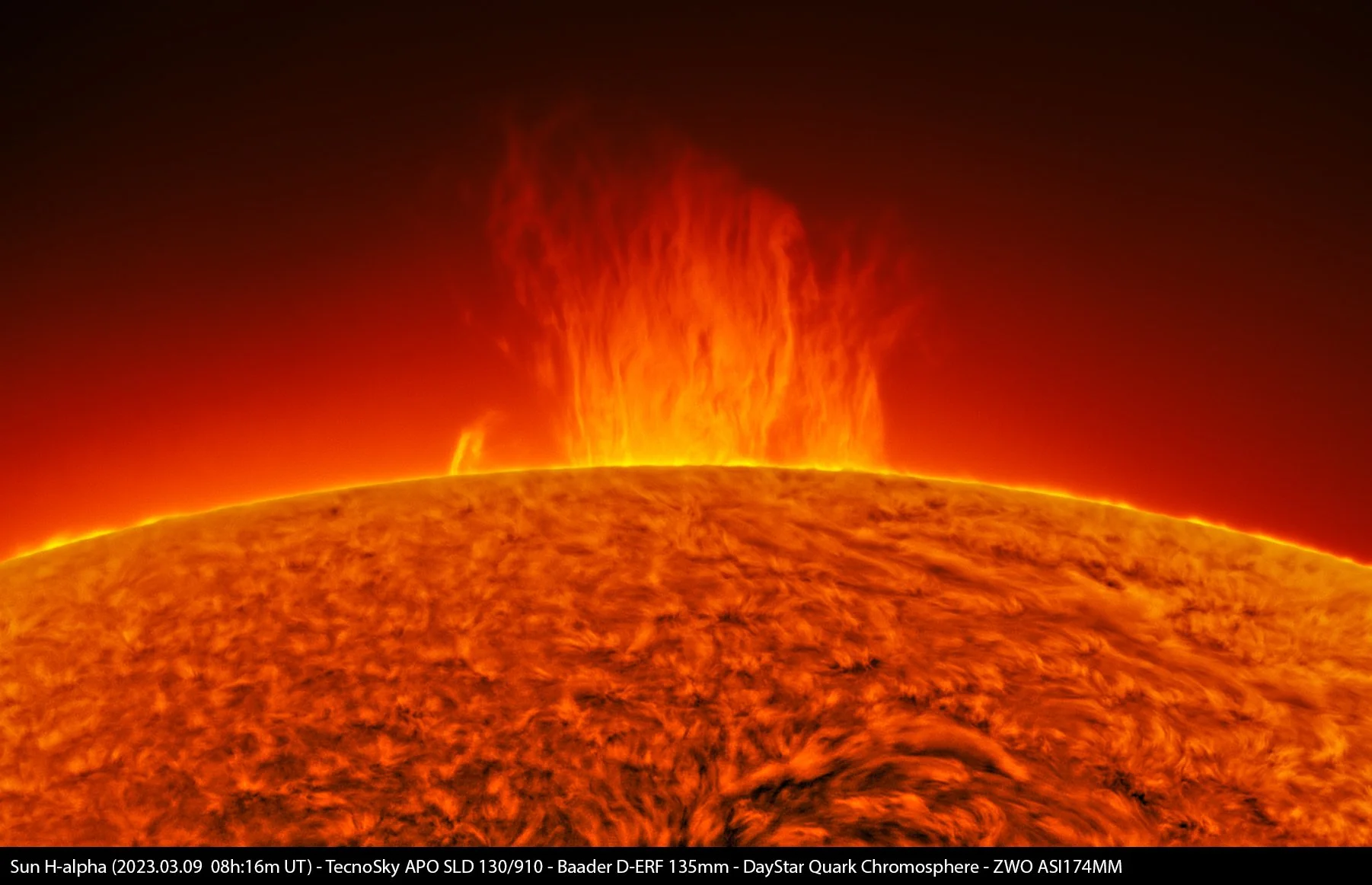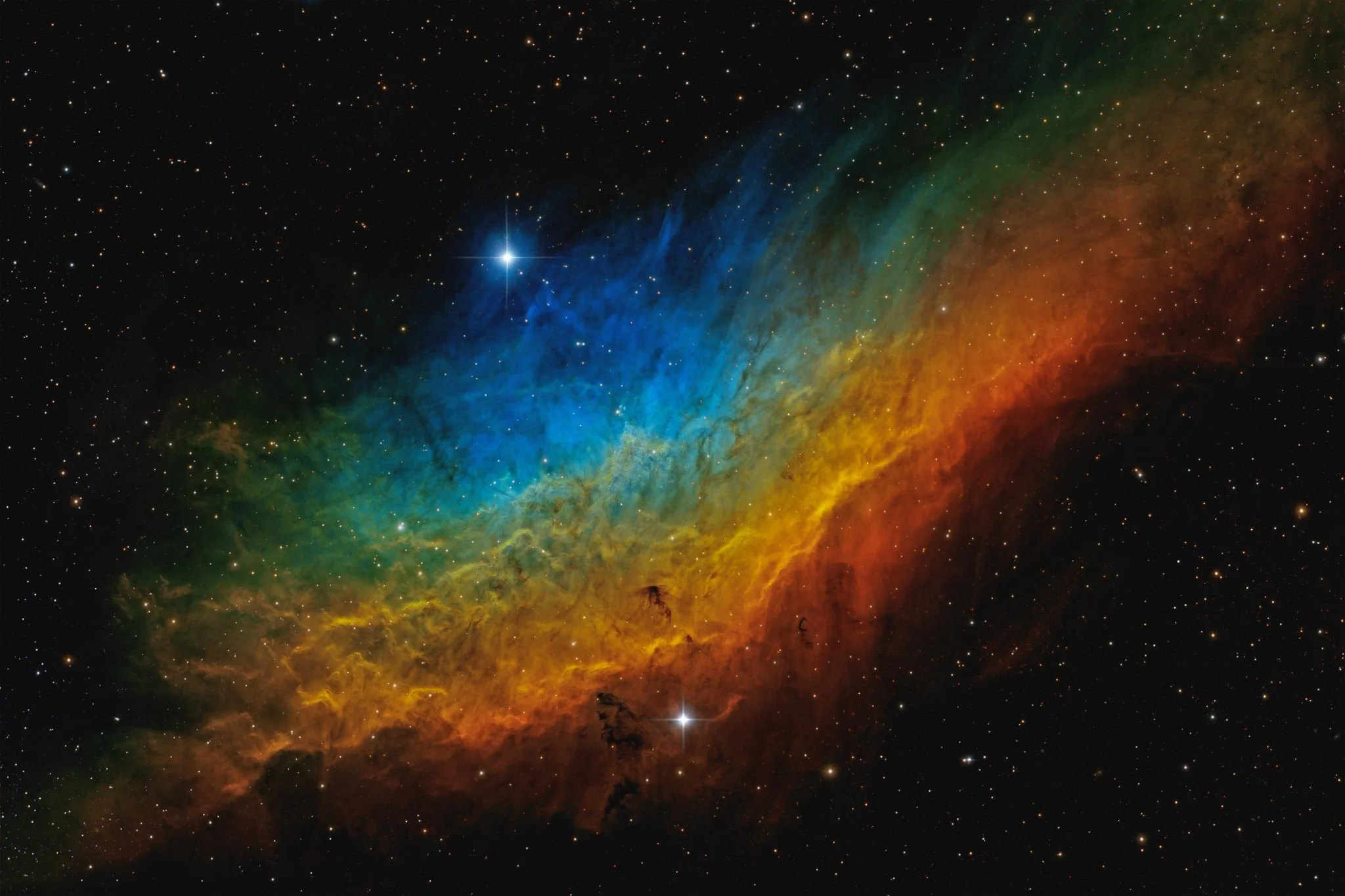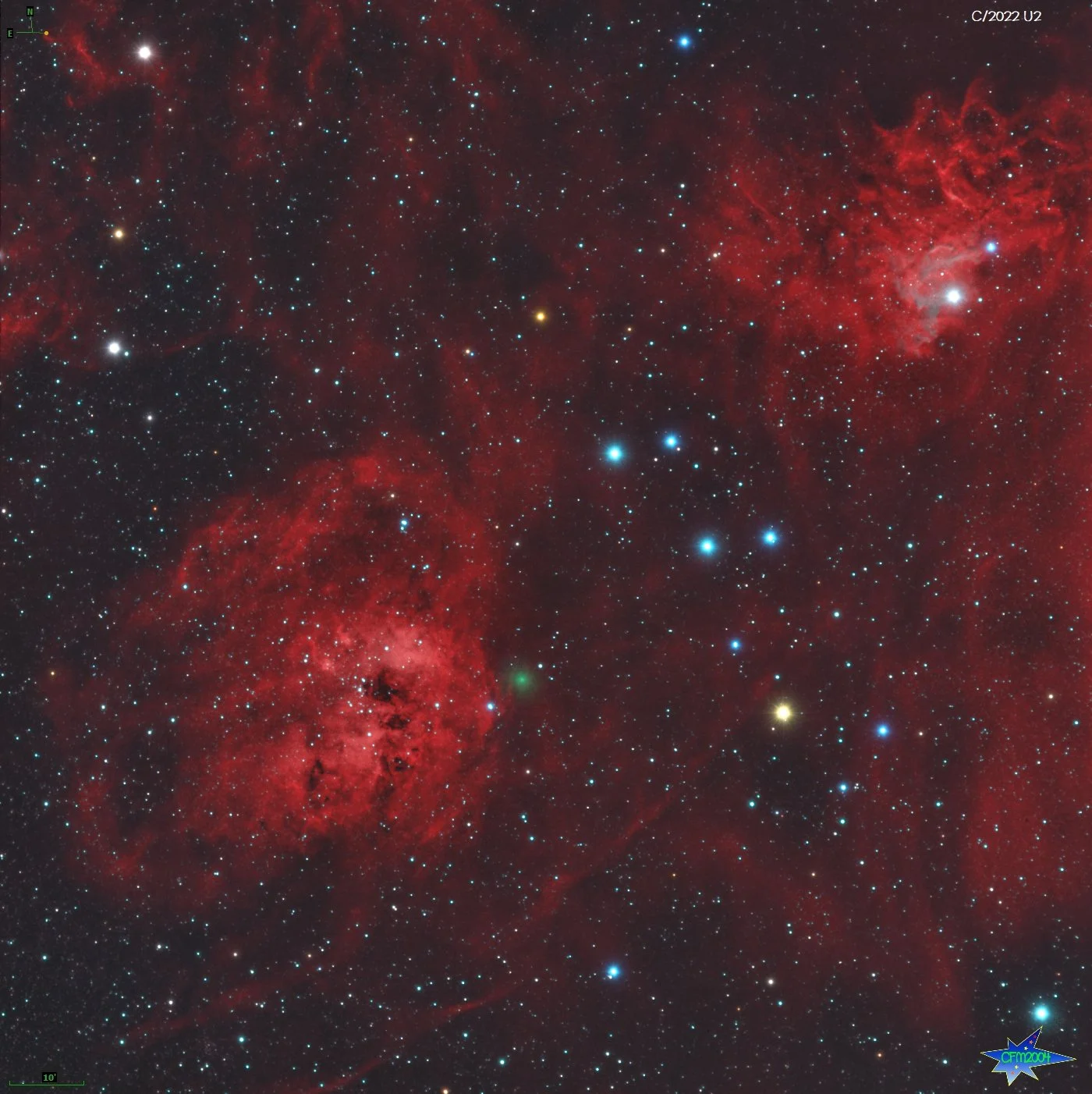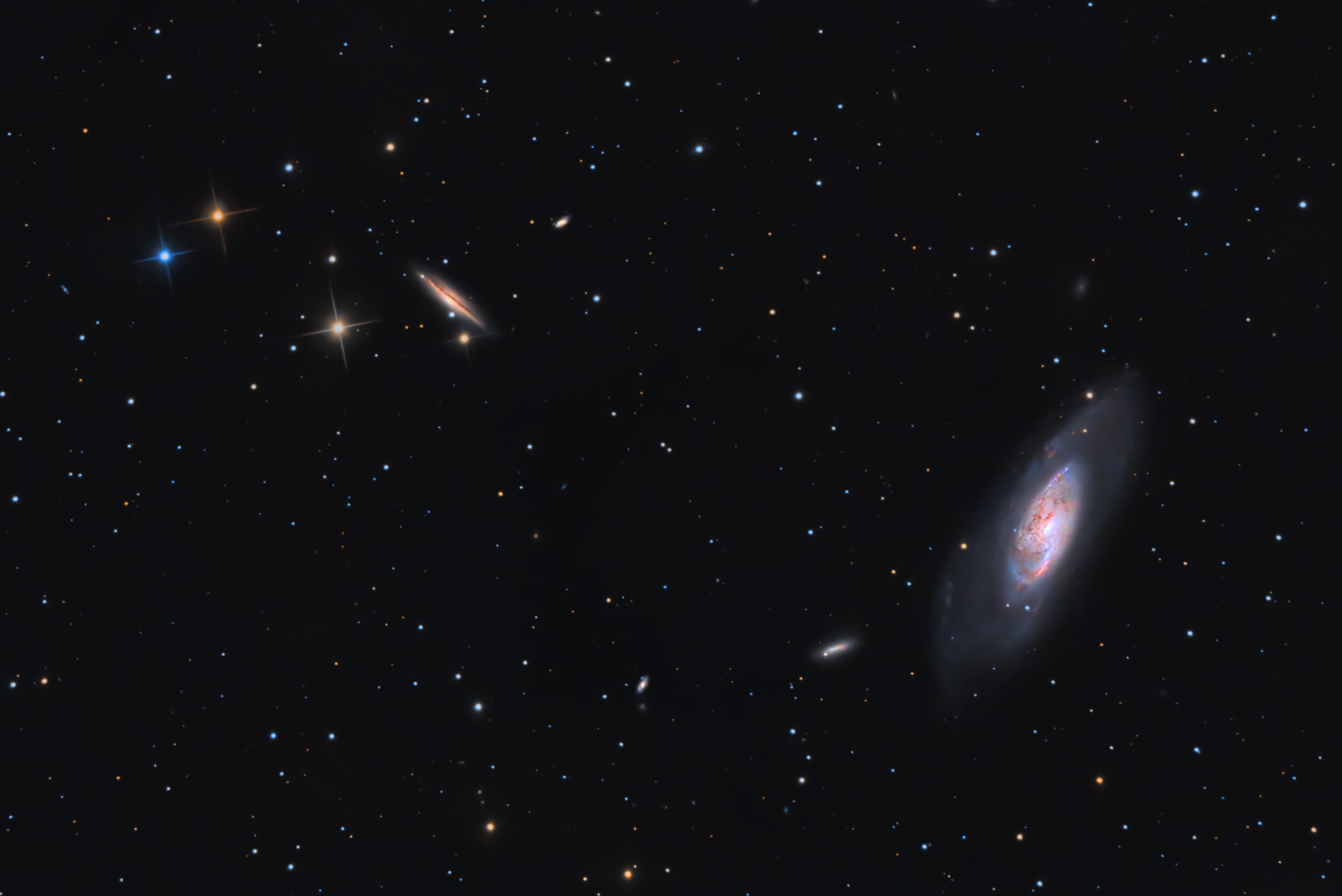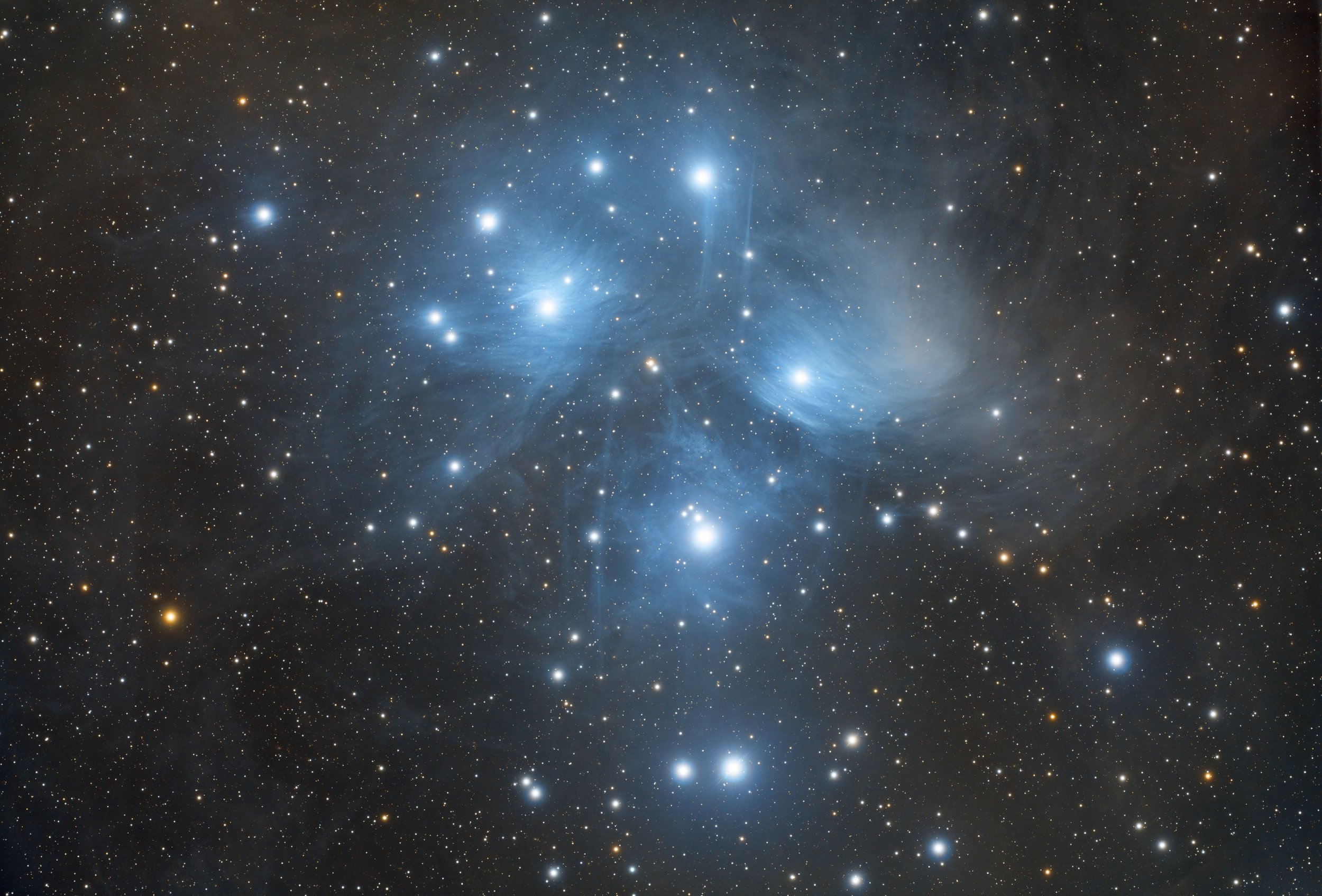
AAPOD2 Image Archives
Season of Milkyway
Image Details:
This beautiful frame captured at February end in this year 2023 .
Milkyway's core & Sagittarius arm started rising just before the Sunrise.
Picture taken in-front of a beautiful waterfall at 4 am in February end ,2023.
Milkyway Core with T-Pot of Sagittarius & Scorpius constellations and Rho-Ophuichi, all are clearly visible.
From now on every upcoming month it's rising time will be 1 hour backward from sunrise .
In July it will be seen throughout the night ( sunset to sunrise). In October it will be present in the sky for just 1 hour and 30 minutes after Sunset.
After early November the Milkyway core can't be seen in the sky and the season will end.
Camera : Sony a7R III
Lense : Sigma 24-70 ( 24 mm used with f 2.8)
Tripod : Manfrotto 290
For Sky total 12 light frame and 8 dark frame taken in shutter speed of 15 sec with ISO 3200
For Foreground 1 frame taken at Blue hour in 20 sec with iso 3200
Stacked in Seaquator , Blend in PS , Process in LR & PS
Copyright : Anupam Naskar
Christmas Tree Cluster and Cone Nebula
Image Description and Details : Taken with Takahashi Epsilon 160ED, ToupTek 2600KMA, EQ6-R pro, Mgen3, Antlia Edge filters at a Bortle 5 area.
20 x Ha, 20 x Sii, 26 x Oiii à 180 seconds each plus RGB stars.
Copyright: Ava Troost Astrophotography
Big solar prominence
Image Description and Details : Big solar prominence taken with an H-alpha filter and an apochromatic refractor.
Copyright:: Salvo Lauricella
A freeze-frame on the Prawn Nebula & Many More
Image Description and Details : This wide field picture features many celestial jewels, including but not limited to IC 4628, NGC 6268, NGC 6231, & NGC 6244. The main object drawing the astronomer attention is most probably IC 4628, a bright Nebula appearing in the constellation Scorpius and located somewhere 6,000 light years from our solar system. Also dubbed the "prawn nebula", it is believed to be a massive stellar nursery, where new stars are forming. Scientists classify it as an emission nebula because its gas has been energized, by the radiation of nearby stars.
Acquisition details:
Processing : @ae_astrophotography
Data : telescope l
Scope : Takahashi FSQ 106 located in Australia
Filters : Sii, Ha, Oiii which gives the so-called "Hubble Palette"
Total integration time : 15H
Copyright: @ae_astrophotography
NGC 1499 - California Nebula
Image Description and Details : To make this a little different to the usual red images of this target, I used narrowband filters and processed this in the SHO Hubble palette resulting in a colourful rainbow-like image. The OIII signal was however very faint, so I captured extra data with this, 19 hours in all, resulting in 48 hours total integration time.
Date of capture: Jan 13 to Feb 17, 2023
Location of capture: Castilléjar, Spain
Light frames:
Ha: 83 x 600 seconds
OIII 114 x 600 seconds
SII: 74 x 600 seconds
Red: 25 x 180 seconds
Green: 24 x 180 seconds
Blue: 25 x 180 seconds
Total Integration: 48 hours 55 minutes
My equipment and details are:
Telescope: Takahaski FSQ106
Mount: Software Bisque Paramount MX+
Camera: Moravian C3-16000 PRO
Filters: 3nM Chroma Ha, OIII, SII and Red, Blue, Green for the RGB stars
Guiding: Moravian C1-1500 and OAG
Focuser: Moonlite NiteCrawler WR35
Copyright: Copyright: Neil Corke
Comet C/2022 U2 Atlas in Auriga
Image Description and Details : Februar 12th 2023 - time 18.00 u.t.
Location: San Romualdo - Ravenna (Italy)
Tecnosky AG70 on Avalon M1
QSI540ws cooled -20
Autoguide with Celestron OAG and QHY174MM
Astrodon RGB GenII E-series and Narrowband 3nm filters
HA-RGB: Ha 15x5min bin2; R 15x2min, G 15x2min and B 15x2min Bin1
Acquired with: Astroart8
Calibrated with bias, dark and flat
Processed with: Astroart8, Paint Shop Pro2023 e plug-in vari.
Copyright: Cristina Cellini
NGC-6188 Chaos & Hope
NGC 6188 is a dazzling emission nebula located in the southern constellation of Ara, about 4,000 light-years away from Earth. This celestial object is a site of active star formation, boasting a cluster of hot, massive stars that illuminate the surrounding gas and dust with their intense radiation.
M95-M96
Image Description and Details : The M96 group, also called the Leo I group, is a collection of galaxies in the constellation Leo. The group contains between 8 and 24 galaxies, including three Messier objects. It is one of the many clusters in the Virgo supercluster.
M96 is the ‘dominant’ galaxy in the group, i.e. the most massive. M95 and M96 are both barred spiral galaxies, of comparable dimensions and a little smaller than our Milky Way (93 000 AL for M96 and 73 000 for M95).
At the top right is the elliptical galaxy M 105 from the bottom, then Ngc 3384 and then Ngc 3389, the highest in the image.
We can also see a beautiful spiral galaxy (seen – by contrast – from the edge) camouflaged in one of the spiral arms of M96.
Other more distant galaxies can be detected in the picture.
Photo taken in Normandy (France) . 7H 15 in L;R,G,B
Set up: Newton skyvision 250 900 f/d 3.6 on Skywatcher mount. Camera ZWO Asi 6200 MM.
Processing APP-Pixinsight-Photoshop
Copyright: Francis Bozon
Abell 39
Image Description and Details :
Abell 39 planetary nebula made from Tona ( Bareclona ) bortle 5 sky with an Orion Optics VX8 200mm f900mm f4.5 reflector and Zwo 1600mm pro camera on skywatcher mount Eq6- r pro. For guidance, the evoguide 50 f230 with zwo178 mm camera has been used. There are a total of 65 * 300s in OIII filter on February 3 and 65 * 60s RGB to each channel on February 12, all shots acquired with NINA 2.0 and processed with Pixinsight 1.8.9-
Copyright: Jordi Compte
NGC 4038/4039 - Viennese waltz in space
Image Description and Details :
For me as an Austrian these are clearly 2 galaxies dancing Viennese Waltz
Astrophysicists consider NGC 4038 / NGC 4039 as 2 interacting galaxies
at a distance of about 75 million light years in the constellation Corvus.
This pair of galaxies is also called Antennae galaxies, named for the long tails of gas and dust they eject.
IAS 10" Newton f/4.5 / QHY268M65
L 65 / R 27 / G 29 / B 26 x 120s (4h54min)
Remote IAS Observatory Hakos, Namibia
Copyright: Herbert Walter
Conjunction Jupiter & Venus
Image Description and Details : Conjunction between Jupiter and Venus over Bougarnin mountain at Tunis
A panorama of 12 photos take it at 18h45 (Tunis Time) from 18/02 to 01/03 with nikon D850 and Sigma 105mm
Copyright: Makrem Larnaout
Messier 106 and surroundings
Image Description and Details : Messier 106 (also known as M106 or NGC 4258) is a spiral galaxy located in the constellation Canes Venatici, lies at a distance of 23.7 million light years from Earth and has an apparent magnitude of 9,1.
At its heart, as in most spiral galaxies, is a supermassive black hole, but this one is particularly active. Unlike the black hole at the centre of the Milky Way, which pulls in wisps of gas only occasionally, Messier 106’s black hole is actively gobbling up material. As the gas spirals towards the black hole, it heats up and emits powerful radiation. Part of the emission from the centre of Messier 106 is produced by a process that is somewhat similar to that in a laser – although here the process produces bright microwave radiation.
The galaxy has another startling feature; i.e., instead of two spiral arms, it appears to have four. Unlike the normal arms, these two extra arms are made up of hot gas rather than stars, and their origin remained unexplained until recently. Astronomers think that these, like the microwave emission from the galactic centre, are caused by the black hole at Messier 106’s heart, and so are a totally different phenomenon from the galaxy’s normal, star-filled arms.
Messier 106 may have a companion galaxy, the spiral galaxy NGC 4217 (top left in my picture, along with the 3 bright stars). NGC 4217 is about 80,000 light years across and appears almost perfectly edge on.
Konus 200/1000 @960mm, f/4.8
Qhy168c @-20 °C
Sky-Watcher Eq6r Pro mount
SvBony CLS filter 222x180"
Optolong L_Ultimate filter 101x300"
N.I.N.A., APP, PixInsight, PS
Copyright: Massimo Di Fusco

